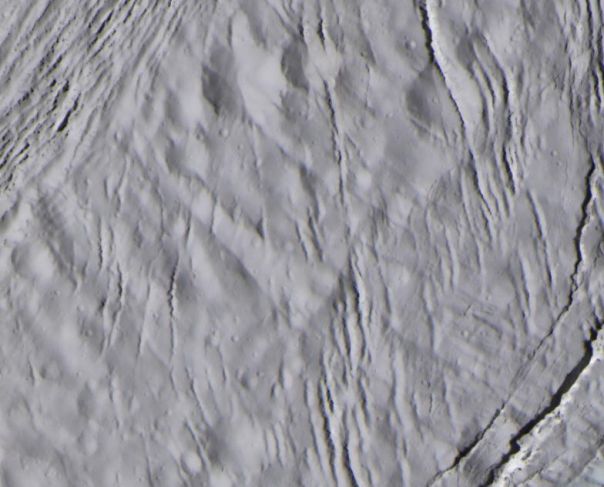
|
Explanation: The surface of Enceladus is as white as fresh snow. Still, an impressive variety of terrain is revealed in this contrast enhanced image. At a resolution of about 30 meters per pixel, the close-up view spans over 20 kilometers - recorded during the touring Cassini spacecraft's March flyby of the icy Saturnian moon. Enceladus is known to be the most reflective moon in the solar system, and the recent Cassini encounters have also detected the presence of an atmosphere, making Enceladus the second moon of Saturn with such a distinction. In fact, Enceladus' fresh looking surface and significant atmosphere both indicate that the tiny, 500 kilometer diameter moon is active. Researchers suspect that ice volcanos or geysers coat the surface with fresh material and replenish the moon's atmosphere, ultimately providing the icy particles that compose Saturn's tenuous E ring.
|
January February March April May June July August September October November December |
| ||||||||||||||||||||||||||||||||||||||||||||||||
NASA Web Site Statements, Warnings, and Disclaimers
NASA Official: Jay Norris. Specific rights apply.
A service of: LHEA at NASA / GSFC
& Michigan Tech. U.
Based on Astronomy Picture
Of the Day
Publications with keywords: Moon
Publications with words: Moon
See also:
- APOD: 2025 August 23 B Fishing for the Moon
- APOD: 2025 July 20 B Lunar Nearside
- APOD: 2025 June 28 B Lunar Farside
- APOD: 2025 June 20 B Major Lunar Standstill 2024 2025
- APOD: 2025 June 18 B Space Station Silhouette on the Moon
- APOD: 2025 April 22 B Terminator Moon: A Moonscape of Shadows
- Moon Near the Edge
